… and That Vinyl Was So Sticky on Hot Days
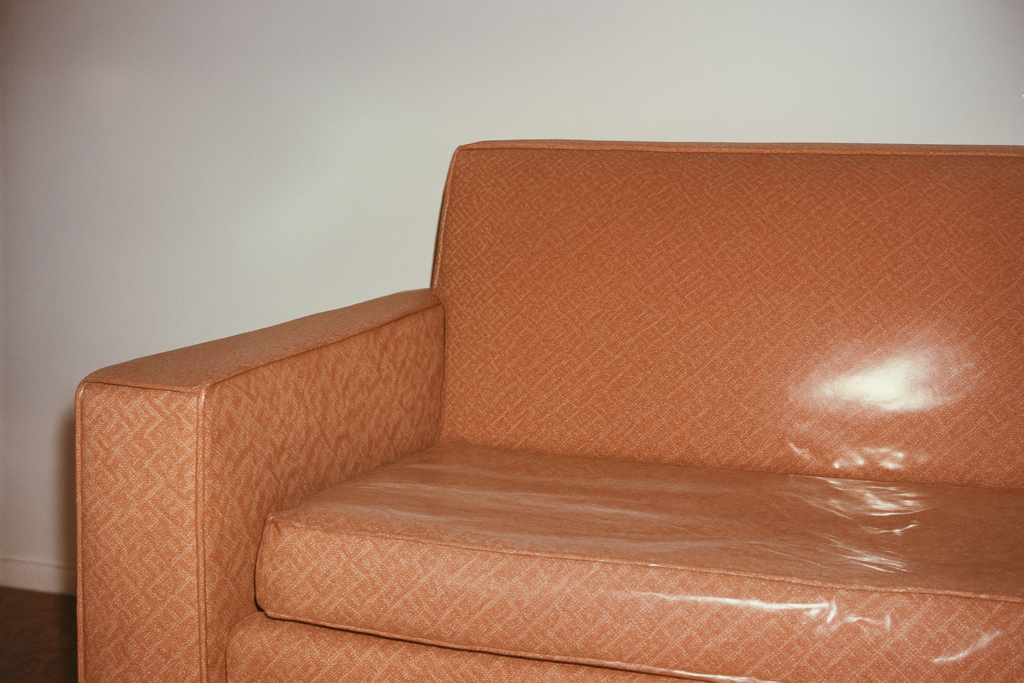
Walking into any suburban house in the 1970s was like stepping into the same groovy time capsule. Whether you were in Des Moines or Detroit, the design blueprint barely budged: wood-paneled dens, avocado green everything, and carpets so shaggy they practically needed grooming. The living rooms were lava lamp-lit, the bathrooms were harvest gold, and the walls might’ve sported wallpaper and velvet. It was a decade that doubled down on earth tones, texture, and sensory overload, part comfort, part psychedelic fever dream.
Somehow, everyone had the same stuff. The same mushroom canisters. The same macramé plant hangers. The same kitchen phone with a 30-foot cord that snaked under every door in the house. Whether it came from Sears or your cousin’s ceramic class, there was a strange uniformity, like the whole country had received the same home makeover memo. Let’s take a tour of the signature items that made every ’70s house feel like, well… every ’70s house.
1. Avocado Green Everything
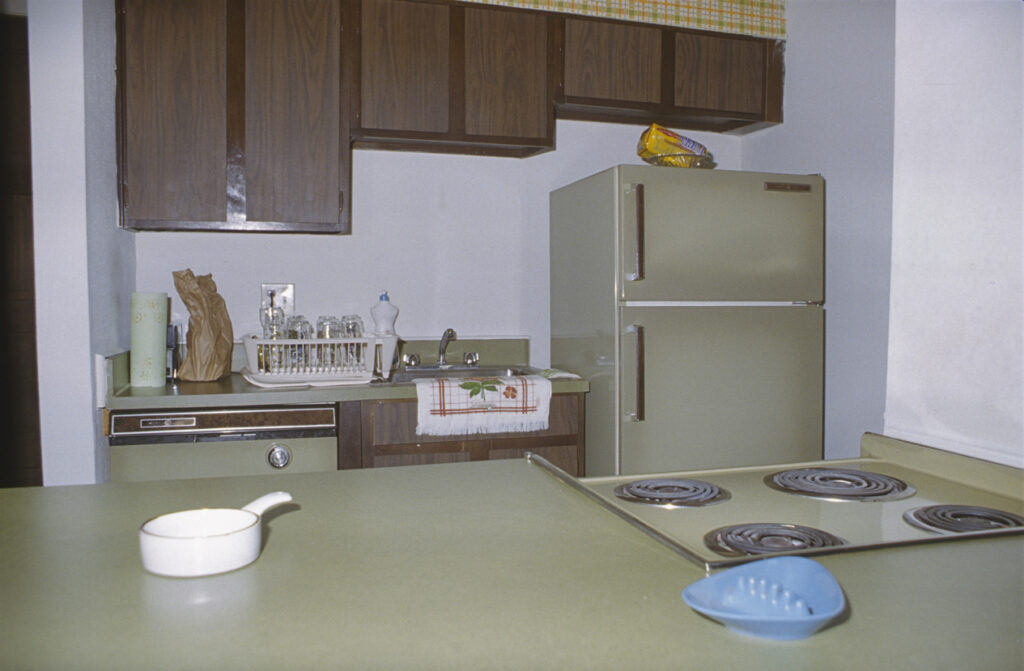
If your house didn’t have avocado green appliances in the ’70s, were you even trying? This earthy, muddy-green hue was everywhere, on fridges, stoves, bathtubs, and even rotary phones that clung to kitchen walls with impossibly long cords. It wasn’t just a pop of color; it swallowed entire rooms. Families gathered around avocado-colored dinnerware, sat on avocado recliners, and dried their hands on avocado terry cloth towels. Even trash cans weren’t safe. The color felt modern and organic, then, a nod to nature in a world increasingly filled with plastic and polyester. Add in wood paneling and burnt orange accents, and you had the unofficial color scheme of a generation.
What’s wild is that this trend wasn’t just popular but practically inescapable. Major manufacturers like GE and Whirlpool leaned hard into the avocado trend, and by the mid-1970s, Better Homes & Gardens called it “the color of the decade.” It even crept into Tupperware sets, fondue pots, and wall phones. And if the appliances didn’t come in green, a vinyl adhesive cover would do the trick. This bold vegetable-inspired color somehow convinced an entire generation to coat their homes in chlorophyll chic. Today, it’s making a comeback in small doses, but it was full immersion back then. Source: Taste of Home
2. Shag Carpet in Every Room
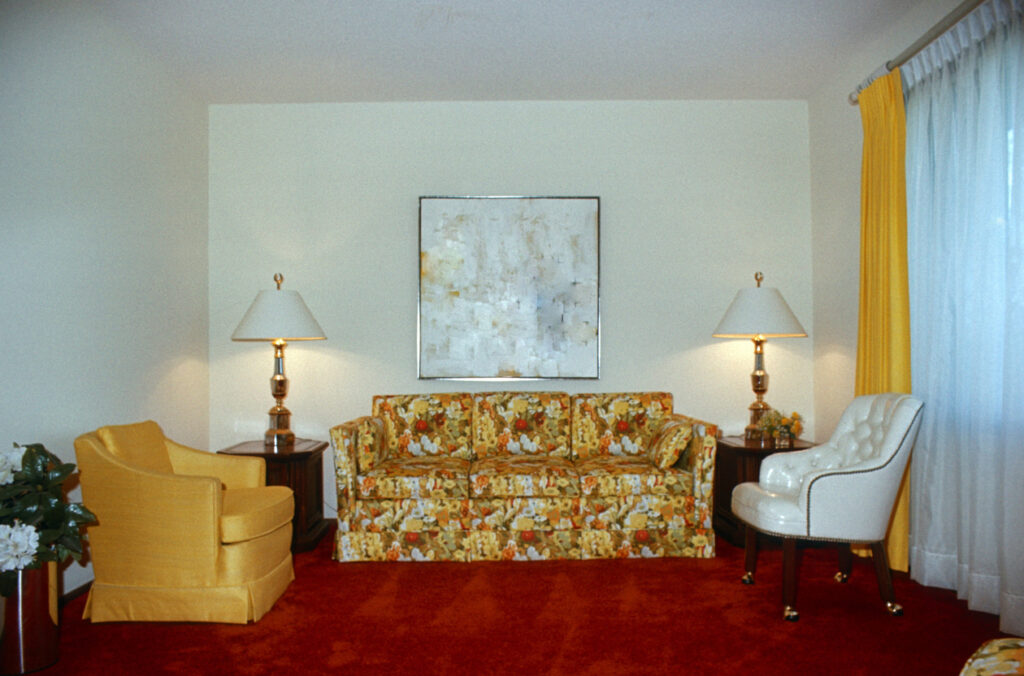
Step onto a ’70s shag carpet and your feet practically disappeared. These thick, fuzzy floor coverings weren’t just rugs but experiences. Running your toes through the long, matted fibers was a sensory ritual, and vacuuming them was a small workout. Shag came in wild colors like mustard yellow, burnt orange, and even deep purple, often paired with wood-paneled walls and beanbag chairs to create a full-on den of cozy chaos. It covered living rooms, bedrooms, and even staircases, creating a plush, noise-muffling landscape into which kids and pets vanished. The deeper the pile, the cooler the vibe—and if your carpet matched your drapes and your couch had a fringe, you were living the dream.
Manufacturers went all-in on the trend, churning out wall-to-wall shag that was sometimes so deep, it became a tripping hazard. It wasn’t uncommon to lose a Lego, a hairbrush, or a TV remote somewhere in the depths of that golden fluff. Maintenance was a mystery, standard vacuums struggled, and more than one mom swore by raking it with an actual plastic carpet rake sold at Sears. The look was inspired by a blend of bohemian comfort and space-age futurism, aiming to soften the home while nodding to free-spirited rebellion. Today, shag is mostly a relic of the past, but its legacy lives on in every modern rug that dares to flirt with texture. Source: Apartment Therapy
3. Wood Paneling: The Brown That Wouldn’t Quit
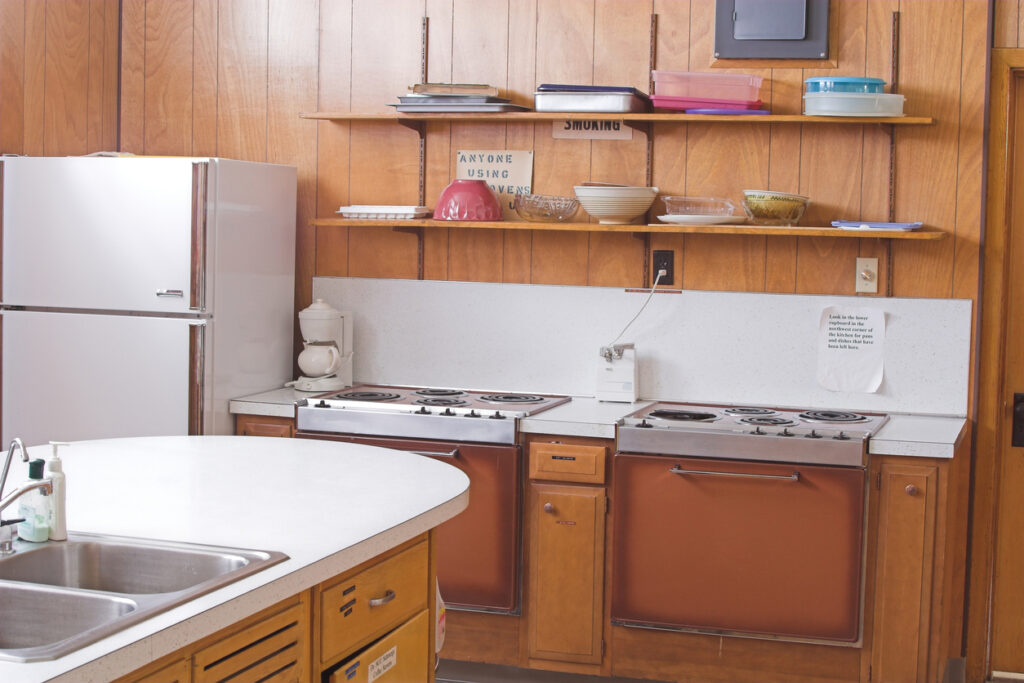
In the 1970s, wood paneling wasn’t just a design choice but a lifestyle. From basements to bedrooms, walls were clad in sheets of faux wood that brought a cozy, cabin-like feel to suburban homes. The most common style featured vertical grooves and a glossy finish, often in walnut, pecan, or mahogany shades. This paneling was typically made from inexpensive materials like plywood or fiberboard, making it an affordable option for homeowners looking to add warmth and texture to their interiors. The installation was straightforward, resulting in a uniform look that defined the era’s aesthetic.
Beyond looks, paneling had practical appeal. It was easy to install, covered up wall imperfections, and provided extra insulation, making it especially popular in cooler climates or drafty basements. Some families even tacked it over existing wallpaper to save on renovation costs. The grooves between panels gave a touch of dimension, though over time those grooves also gathered a lifetime of dust. By the ’80s, it was already being painted over in off-white rebellion, but wood paneling was as American as a Swanson TV dinner for a solid decade. Its deep tones and no-nonsense vibe made it the background of countless childhood memories. Source: Curbed
4. Macramé, Mushroom Canisters, and the Rise of ’70s Kitchen Décor
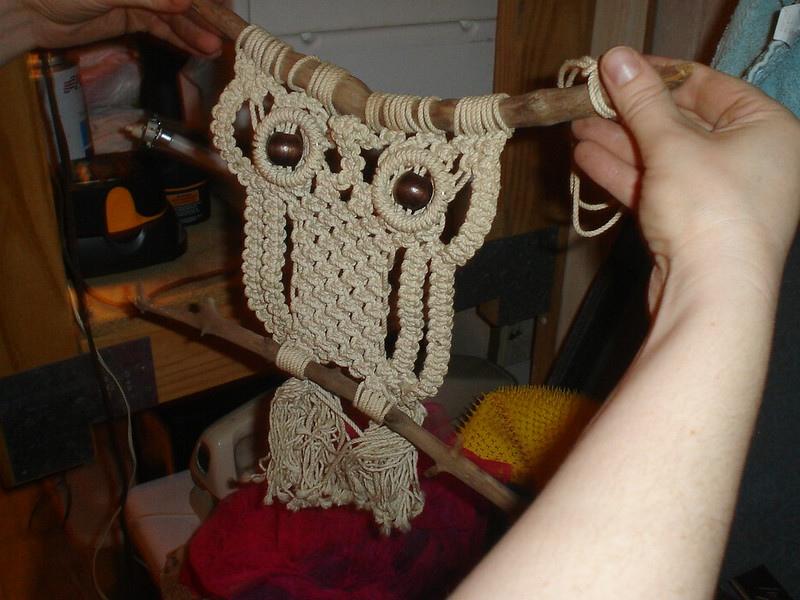
If the living room was wrapped in shag and paneling, the kitchen had its own flavor, and that flavor was kitschy, crafty, and unmistakably mushroom-themed. No ’70s kitchen felt complete without a set of ceramic mushroom canisters perched proudly on the counter. These hand-painted containers came in shades of harvest gold, burnt orange, and that omnipresent avocado green. Often gifted at weddings or bought at Sears, they stored everything from sugar to spaghetti and matched the embroidered tea towels and vinyl place mats that screamed rustic meets psychedelic. Alongside them, spice racks in wagon wheel designs and matching toadstool salt-and-pepper shakers turned every meal prep session into a woodland fantasy.
But it wasn’t just the canisters; macramé was everywhere. Hanging planters, wall art, and even room dividers were knotted by hand in natural cotton rope, suspended from driftwood or brass rings. Many were DIY projects, crafted from kits sold at Woolworth’s or made at home during evenings fueled by Tab and soap operas. Homemakers proudly hung their creations in front of windows or over the fireplace, giving even the most suburban homes a touch of bohemian flair. The result was a warm, tactile space that felt handmade and heavily styled. Together, macramé and mushroom motifs created a uniquely ’70s vibe, equal parts Earth Mama and enchanted forest. Source: The Spruce
5. Rotary Phones with 30-Foot Cords
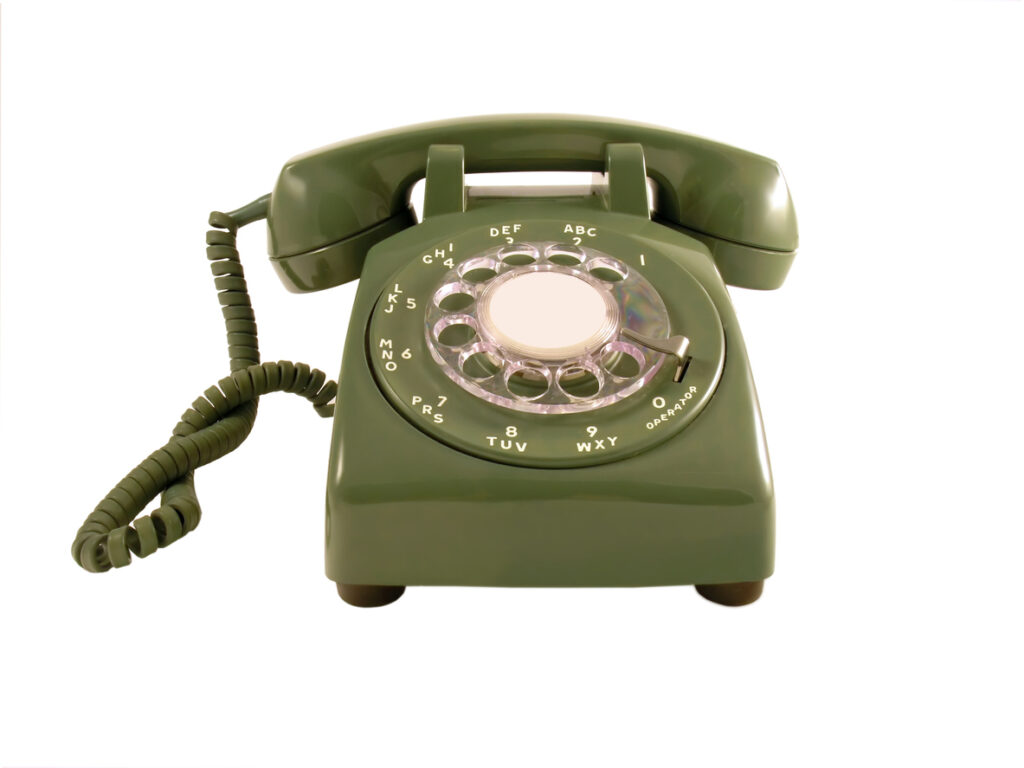
Before smartphones and speed dial, there was the unmistakable click-click-click of a rotary phone spinning back into place. Mounted on kitchen walls or perched on hallway side tables, these heavy, bell-bottomed telephones were built to last and to stay put. But that ridiculously long, coiled cord gave them their true power. Stretched across rooms and wrapped around door frames, the 20- to 30-foot cord let you talk while cooking dinner, folding laundry, or hiding in the bathroom for some privacy. Over time, the cord would get so tangled that it looked like a Slinky had a nervous breakdown, but nobody seemed to shorten it.
Colors were key. Harvest gold, avocado green, and even dusty rose were popular choices, often coordinated with the kitchen’s appliance lineup. The tactile dialing, a whole wrist twist for each number, gave every call a kind of ceremony. And if you messed up? You had to start all over again. Teenagers mastered whispering into the receiver while dragging the phone into a closet for a bit of secrecy. Phones were leased from the phone company back then (often Ma Bell), and many households had just one, making it the central hub of family drama, birthday wishes, and eavesdropping siblings. Source: CNN
6. Lava Lamps and Psychedelic Lighting
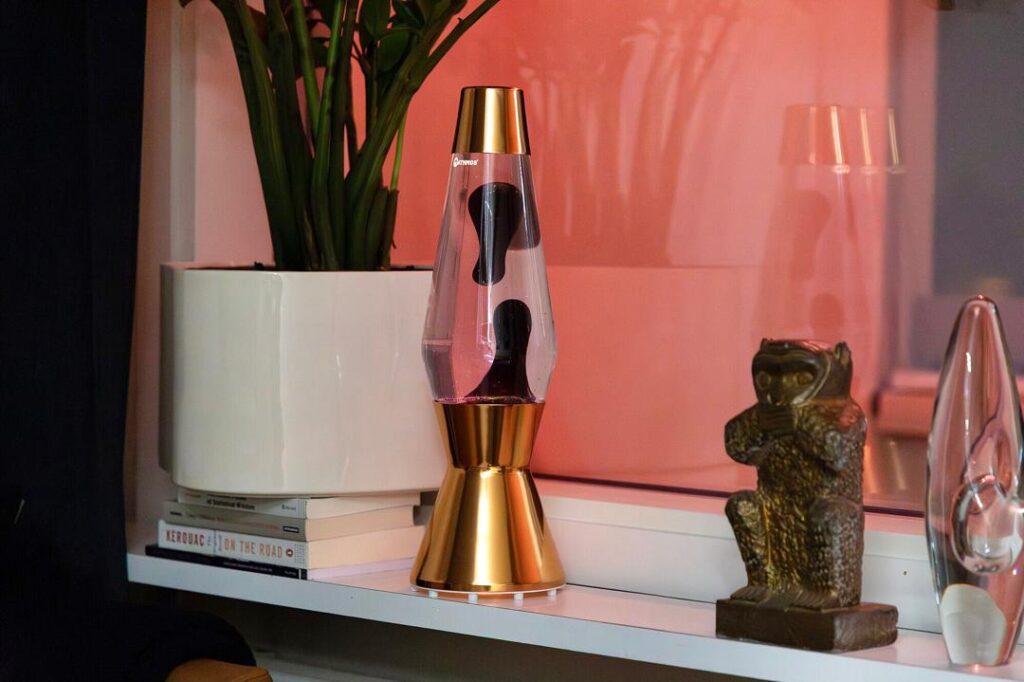
No ’70s bedroom or basement hangout was complete without the slow-motion magic of a lava lamp. Sitting proudly on nightstands or stereo cabinets, these hypnotic lights bubbled and oozed with mesmerizing blobs of colored wax suspended in clear liquid, all warmed to life by a single bulb. Turn one on, and it took about 30 minutes to “wake up,” but once it got going, it became the ultimate mood-setter, part science experiment, part acid trip. Initially invented in the 1960s, lava lamps were popular in the ’70s as symbols of extraordinary rebellion, perfect for blacklight parties, Pink Floyd records, and zoning out after school.
They weren’t alone in their trippy vibe. Homes also featured stained glass pendant lights over kitchen tables, swag lamps hanging from ceiling chains, and wall sconces with dimmer knobs that added to the ambient flair. Some kids even had color-changing fiber optic lamps or spinning disco bulbs projecting reds, purples, and greens onto shaggy walls. It was lighting as personality, far from sterile or practical, these glowy artifacts helped define an era that loved to feel its way through space. Whether you were dancing in the den or just staring at the ceiling, the lighting of the ’70s made everything feel a little dreamy, a little hazy, and far out. Source: Smithsonian Magazine
7. Sunken Living Rooms (a.k.a. Conversation Pits)
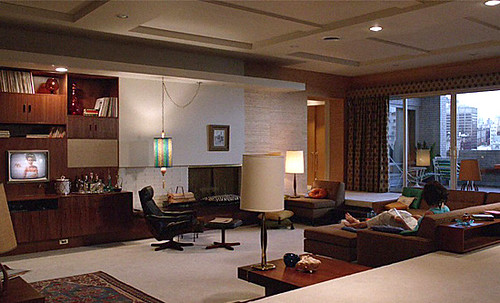
If your living room dropped down a step into a plush, recessed area filled with low-slung furniture, you were living the ’70s dream. Sunken living rooms, or “conversation pits,” were designed to feel intimate and modern, creating a cozy little amphitheater right in the heart of the house. These spaces often featured wraparound sectionals in shades of rust, brown, or mustard, and thick shag carpet underfoot that muffled every step. The idea was to bring people together on the same level for drinks, board games, or long talks with Crosby, Stills & Nash playing in the background. No coffee table was too large, and no throw pillow was too bold.
Architects and designers pushed this design trend as both a visual statement and a social experiment. Inspired by mid-century modern aesthetics and popularized by shows like The Brady Bunch, the step-down layout gave the illusion of more space while separating the lounge area without walls. Of course, they came with downsides: kids tripped, drinks spilled, and furniture was a nightmare to rearrange. Still, for a moment in time, a house didn’t feel stylish unless at least one room made you take a step down to relax. They’re rare relics today, but in the ’70s, they were a sunken symbol of cool. Source: Dwell
8. Popcorn Ceilings You Couldn’t Stop Staring At
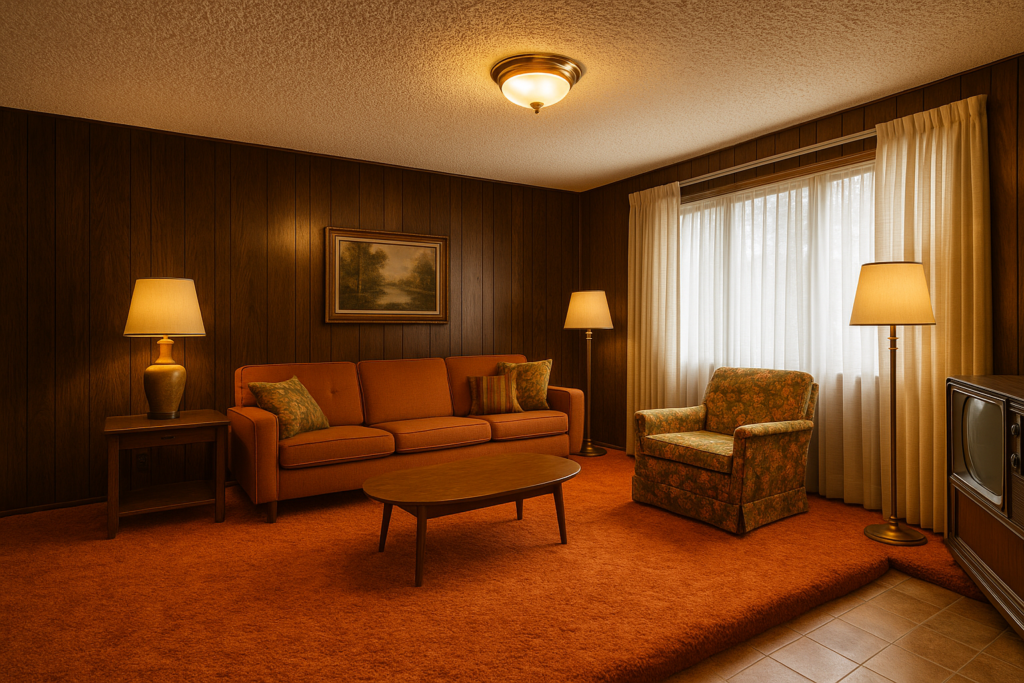
Look up in any ’70s home, and chances are the ceiling wasn’t smooth; it was textured like cottage cheese. Popcorn ceilings, also known as acoustic or stucco ceilings, were a defining feature of the decade. They used a spray-on technique to create a bumpy, almost foamy finish meant to hide imperfections and muffle sound. Builders loved them because they were fast, cheap, and forgiving. Homeowners accepted them because they didn’t know what lay beneath or everyone had them. The style spread like wildfire, creeping into hallways, bedrooms, living rooms, and even bathrooms. The look was oddly satisfying, and some kids swore they could spot faces or shapes in the patterns.
What no one realized at the time? Many of these ceilings contained asbestos, a fire-resistant material later found to be dangerous when airborne. Removal today requires hazmat-level precautions, which is part of why so many homes still quietly wear their popcorn tops decades later. In the ’70s, though, it wasn’t about safety, it was about simplicity and that slightly space-age texture that felt just modern enough. Some even added sparkles to the mix, catching the light and giving the ceiling a disco-ball shimmer. Functional, yes. Fabulous? That’s up for debate, but undeniably iconic. Source: Architectural Digest
9. Built-In Bars and Mirrored Walls
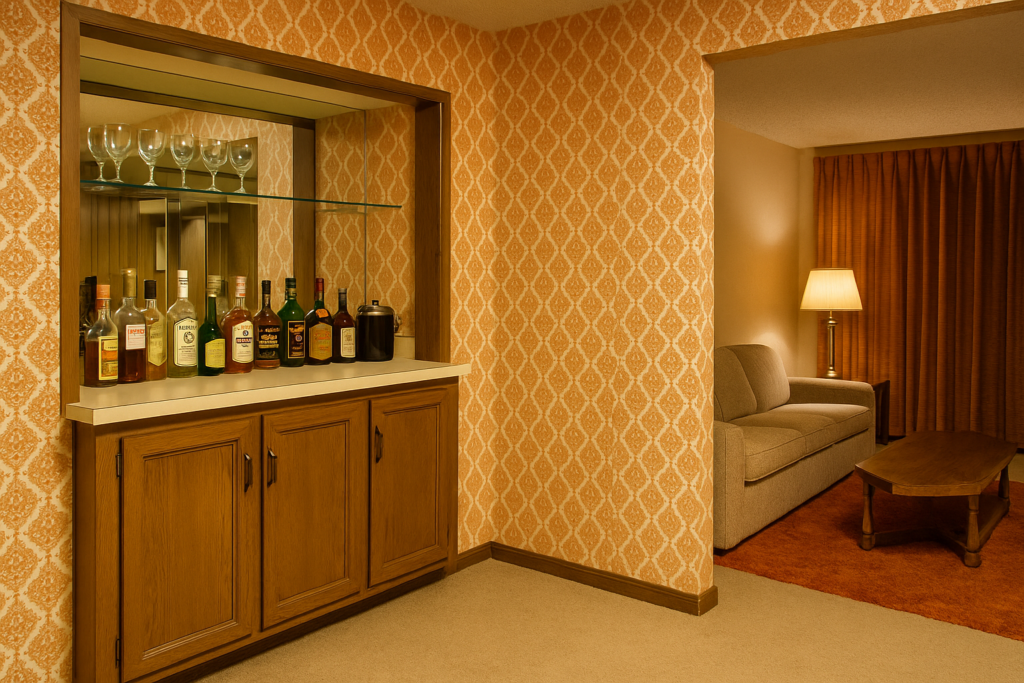
Nothing said “grown-up glamour” in the ’70s quite like a built-in home bar, often tucked into the corner of the den or right beside the sunken living room. These bars weren’t subtle. They came outfitted with smoky mirrors, chrome accents, lucite stools, and enough faux leather to upholster a Cadillac. Behind the counter, glass shelves showcased cut-crystal decanters filled with scotch, rye, or bright green crème de menthe that rarely got touched. Parents mixed Harvey Wallbangers or poured cans of Tab into highball glasses while shag carpet silently soaked up the spills. If the bar had a mirrored backsplash or light-up shelving, it was considered the height of style.
Mirrored walls were the other design trick meant to add drama and create the illusion of more space. These full-length reflections turned up in dining rooms, hallways, and basement rec rooms, bouncing light around in chaotic, glittering fashion. They often paired with brass light fixtures or vinyl furniture, giving the room a glossy, almost surreal effect. The look combined disco flash with suburban ambition. These weren’t just decorative choices. They were lifestyle signals, meant to impress guests, show a little flash, and let everyone know you were stylish, social, and more than ready to host cocktail hour. Source: House Beautiful
10. Harvest Gold Everywhere You Look
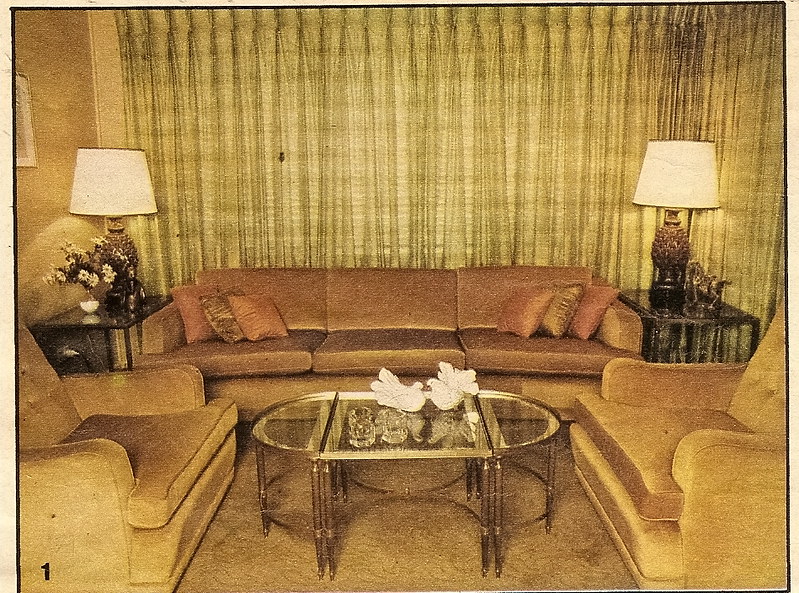
If avocado green was the king of the ’70s color palette, harvest gold was its equally dominant queen. This warm, yellow-gold hue coated everything from kitchen appliances to bathroom tiles. It wasn’t just a color, it was a commitment. Refrigerators, ovens, dishwashers, and even sinks proudly wore the shade, often paired with dark wood cabinets and linoleum floors patterned in dizzying geometrics. The goal was to make kitchens feel earthy and cheerful, but in hindsight, the effect could border on overpowering. Some homes even had harvest gold bathtubs or wall-to-wall carpeting, pulling the look through every room like a golden thread.
Appliance makers marketed harvest gold as modern and inviting, a sunnier alternative to sterile white or institutional beige. By the mid-1970s, it was one of the most requested finishes in American households, especially in open-plan kitchens where everything needed to coordinate. Alongside coordinating colors like rust, brown, and orange, harvest gold helped create the “autumn all year” feel that defined the decade’s design. It appeared on rotary phones, bathroom towels, fondue pots, and laundry machines. While the color fell out of favor by the early 1980s, its legacy is unmistakable. One glance at a gold-toned appliance, and you’re instantly transported back to pot roast, potholders, and peacock wall clocks. Source: The Wall Street Journal
11. Plastic Slipcovers on Every Couch

For an entire generation of families, the living room couch wasn’t for comfort but for preservation. That’s why many homes wrapped their floral or velvet sofas in thick, crinkly plastic slipcovers. These clear vinyl shields were custom-fitted or stapled into place, turning every plush seat into a noisy, slightly sticky ordeal. You’d sit down and hear the unmistakable squish-crackle as the plastic shifted beneath you. In summer, bare legs stuck to the surface like tape. In winter, the covers felt ice-cold. But to many homeowners, especially proud parents and grandparents, the trade-off was worth it. The furniture stayed pristine, protected from spills, crumbs, and the chaos of everyday life.
Plastic slipcovers became especially popular in working-class and immigrant households, where the sofa was a significant investment and protecting it was a point of pride. Some covered armchairs, dining room chairs, and car seats were in the same clear plastic. Catalogs like Sears and Montgomery Ward sold them in every shape and size. They were considered practical and forward-thinking, even if guests secretly dreaded sitting down. The covers often lasted longer than the couch, surviving through reupholstering, moves, and generations. Today, they’re mostly viewed as quirky relics of the past, but back then, they symbolized pride, preservation, and just a little paranoia. Source: New York Times
12. The Record Console or Hi-Fi Cabinet
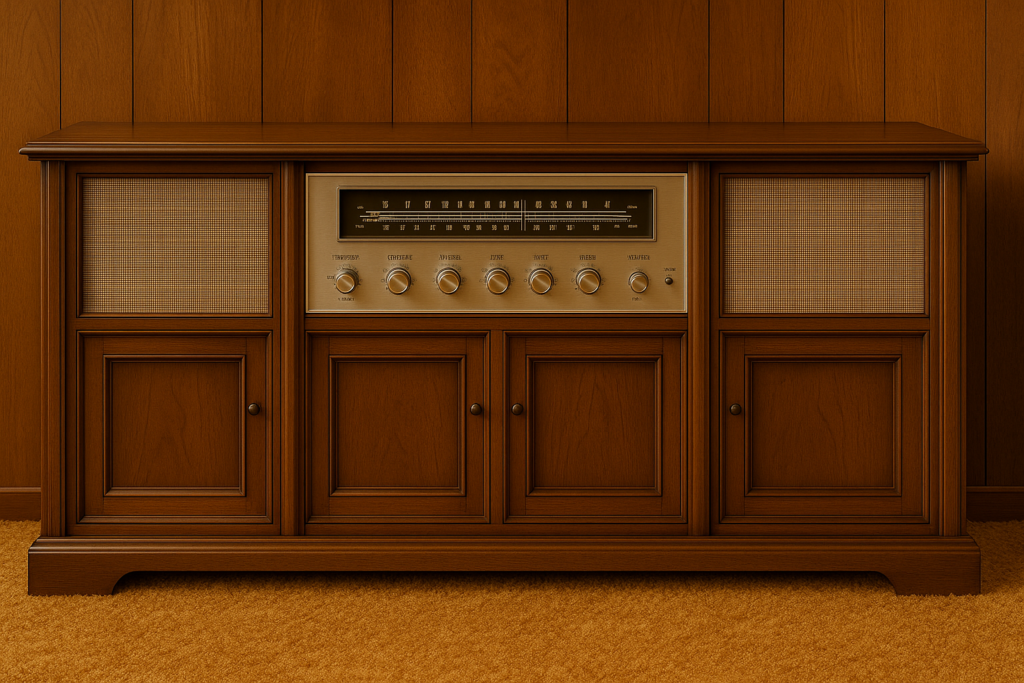
Before Bluetooth speakers and streaming apps, the crown jewel of any ’70s living room was the hi-fi console, a long, low-slung wooden cabinet that combined a record player, AM/FM radio, and massive built-in speakers in one sleek package. These units weren’t just electronics; they were furniture, often stretching six feet or more across the wall and finished in dark walnut or faux mahogany. The top lifted on a hinge to reveal the turntable inside, while the front grille panels masked giant woofers that could rattle the whole house. Families gathered around them like previous generations had around the fireplace, flipping LPs and adjusting knobs with reverence.
Hi-fi systems were more than sound, they were status. Brands like Magnavox, RCA, and Zenith competed to produce the most elegant and powerful setups, and some even came with 8-track players, built-in liquor compartments, or velvet-lined storage drawers for vinyl collections. Saturday mornings were for cleaning the house to Fleetwood Mac or Donna Summer, with the hi-fi pumping out tunes loud enough to hear from the driveway. The audio quality was rich and room-filling, a far cry from today’s tinny phone speakers. As living rooms evolved, stackable stereo towers eventually replaced many consoles. Still, nothing matched the vibe of sliding open that heavy wooden lid and hearing the gentle crackle before the music kicked in. Source: Collectors Weekly


